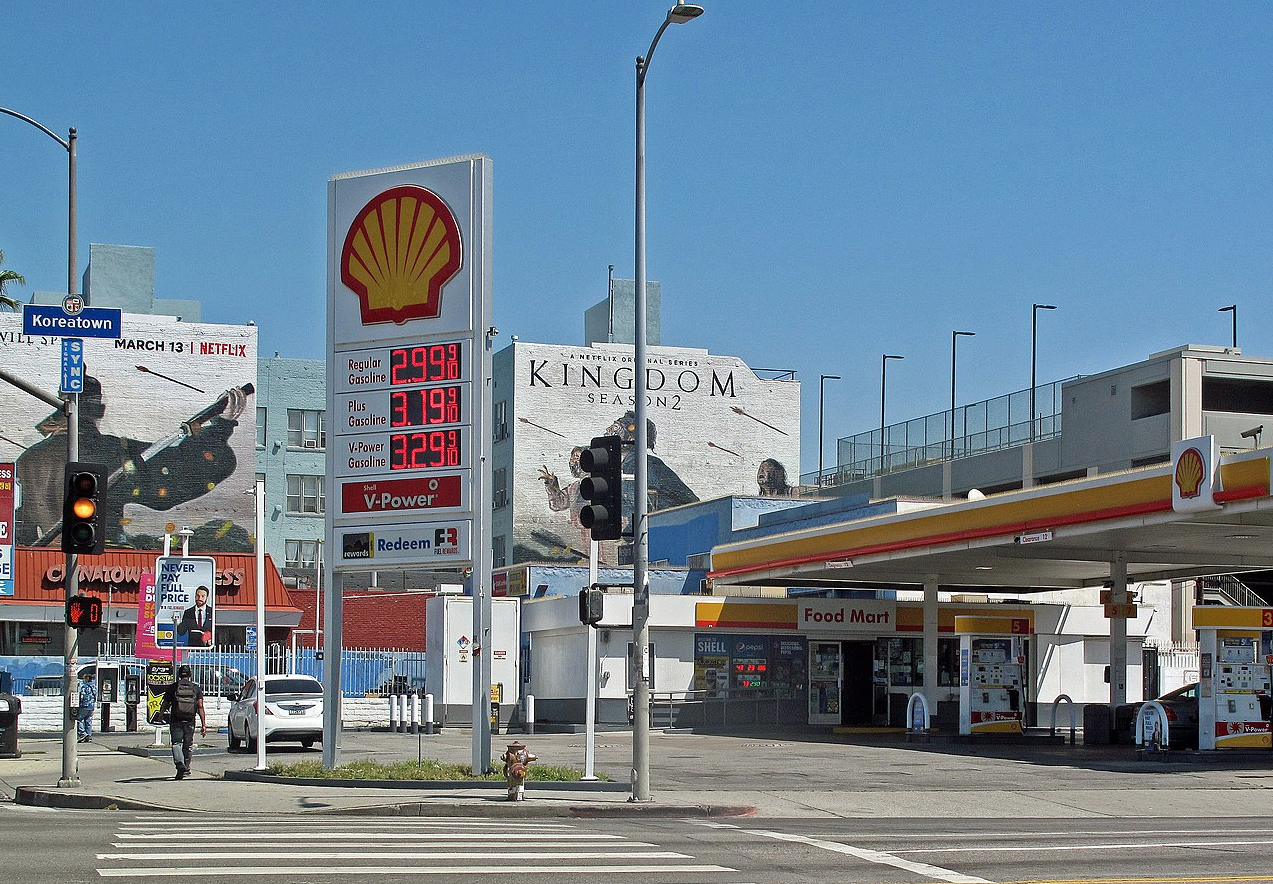
When I was growing up, gasoline generally sold for about 33 cents a gallon. Some stations charged 32 cents, while others charged 34 cents, but there was relatively little variation (over time or geographically.)
When I moved to Orange County, I was surprised by the degree of price dispersion. It’s not unusual to see gasoline prices vary by 50 or even 75 cents between two outlets only a few miles apart. Even in percentage terms, that’s much more price dispersion than I saw back in the 1960s.
On a recent trip to Tanzania, I observed the opposite pattern, a very high level of price uniformity. Almost every station charged around 3100 shillings per liter, with only tiny price variations. So what explains these differences in price dispersion?
You might assume that price differences reflect cost differences. Perhaps some gas stations in Orange County bought a shipment of gasoline at a higher price than the neighboring station. But that cannot be a complete explanation. Even if their cost basis differed, you might expect consumers to rebel against paying more at one station than another. Most consumers don’t care what they gas station paid their wholesaler; they just want to buy the product at the lowest price possible.
Instead, I suspect that income differences explain variations in price dispersion. In relatively affluent Orange County, consumers prefer not to spend a lot of time driving around looking for the best deal. Because of a high opportunity cost of time, gas stations have a bit more market power than they’d have in a perfect frictionless market. In Tanzania, incomes are quite low, and gas stations would lack customers if they charged even one percent more than their competition.
Of course, this is just one anecdote. But I’ve observed the same pattern in China, where there is less price dispersion for a wide range of goods than in the US.

READER COMMENTS
Bobster
Feb 21 2024 at 4:47pm
Nate Silver brought up a theory that price discrimination is increasing to deal with inflation. Wonder if this is an example of that.
Matthias
Feb 21 2024 at 6:41pm
Inflation was a lot higher in Scott’s youth, wasn’t it? (Well, not sure if the 1970s falls into his youth?)
Scott reports that there was less price dispersion between gas stations in his youth.
Scott Sumner
Feb 22 2024 at 12:52am
“Nate Silver brought up a theory that price discrimination is increasing to deal with inflation.”
Do you mean as a cause of inflation? We know what causes inflation, and we’ve known the cause for hundreds of years. It’s monetary policy.
Or does “deal with” mean price discrimination is an effect of inflation?
Dylan
Feb 22 2024 at 6:32am
I think this is the piece that Bobster is referring to. The idea is that companies have gotten better at “algorithmically-driven price discrimination” which is one of the factors that is driving PCE to increase at a faster rate than the CPI. Interesting read, but Nate is more interested in how people are feeling and how that can drive political sentiment than in trying to explain the causes of inflation.
Scott Sumner
Feb 22 2024 at 3:14pm
It’s depressing that people feel a need to develop a new theory of inflation when we already know what causes inflation. Imagine if biologists said, “Hey, I have a new theory of the origin of species, an alternative to evolution.”
It’s embarrassing.
Dylan
Feb 22 2024 at 3:49pm
I don’t think this falls into that category, it isn’t a new theory of what causes inflation, it is a story about people spending more money on things and feeling poorer as a result. Nothing in there is incompatible with monetary supply being the cause of inflation.
Bobster
Feb 25 2024 at 4:41pm
No, I don’t think he’s saying that it’s a new cause of inflation.
My point is just that price discrimination might make more sense now after a burst of inflation. On the margin more people might be clipping coupons, while many others still don’t care.
During times like this, not everyone gets the wage increase right? Even though wages are rising too fast, it doesn’t happen uniformly, leaving more chance for price discrimination.
Dylan
Feb 21 2024 at 5:23pm
I’ve noticed the same thing in NYC, but here at least it seems unlikely to be income driven since I suspect that the vast majority of miles driven are by taxi/Uber drivers who I would suspect are pretty price sensitive. In 2022, when gas prices were pretty high nationwide, I had an accident and was taking car services much more regularly than I normally do, and I would see stations that differed in price by over $1 gallon, sometimes only a few blocks from each other (these were in Brooklyn and Queens, not Manhattan). I don’t have a good theory as to why that might be, but interested to hear any ideas.
steve
Feb 22 2024 at 11:17am
Relative who owns a couple stations says a lot goes into it but often it’s just trial and error. If you have a good location people will pay extra due to the convenience so that’s what you charge. You can track the effect of price increases vs total sales. Plus, lots of places make most fo their profit from store sales. You can offer lower prices if you think it will lure more people in to buy more Ding Dongs.
Steve
BS
Feb 22 2024 at 11:37am
Higher than what I’m used to. I assume retailers pay attention to GasBuddy. Someone (not me) ought to study price gradients over distance using the GasBuddy data.
Comments are closed.